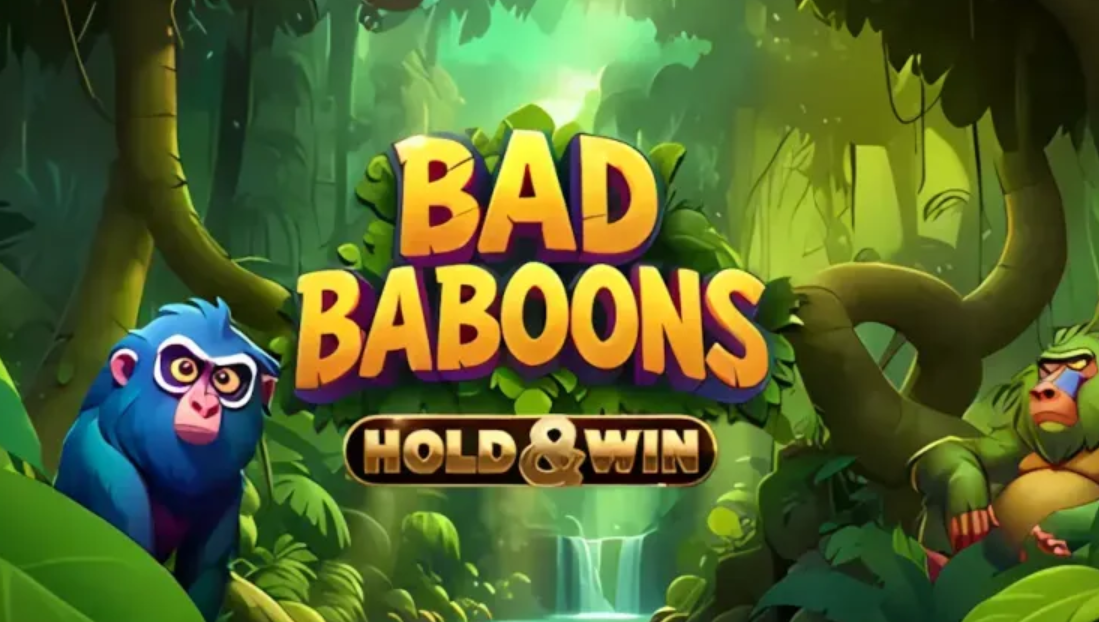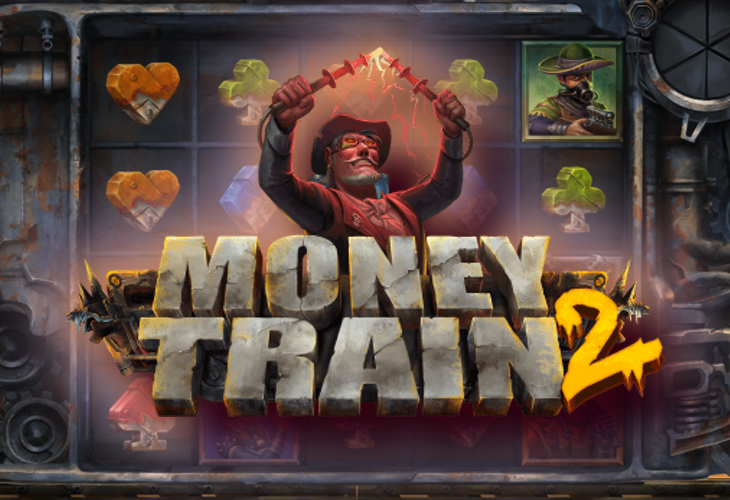
The Bad Baboons online game is a fast-paced, action-packed game where you have to make split-second decisions and stay focused until the final sprint. It combines easy-to-understand mechanics, stylish cartoon graphics, and flexible settings for any level of experience. From the very first minutes, bad baboons draws you into its exciting rhythm: you learn to read the situation on the field, seize the moment, and carefully manage risk.
What kind of game is it: a brief overview
The game is built around a series of short rounds with increasing difficulty. Each round is a mini-challenge where you have to complete a goal within a limited time: collect resources, activate boosters, avoid traps, or maintain a series of successful actions.
Who will enjoy Bad Baboons
- Beginners who value a low entry threshold and straightforward rules.
- Fans of quick sessions during breaks — each round takes 1–3 minutes.
- Those who appreciate clean visuals, clear readability, and clever hints.
Why it’s relevant for the US audience
Sessions fit easily into your schedule, the interface is mobile-friendly, and the controls are convenient in English and oriented towards familiar gestures/buttons. In addition, the game performs well on devices and browsers commonly used in the US.
💡Expert opinion: “Bad Baboons’ strength is the balance between ease of entry and depth of decision-making. Newbies aren’t intimidated, and experienced players find micro-optimizations by the third round.”
Mechanics and interface: how it all works
The main gameplay loop is simple: enter the round → read the layout → choose a tactic → perform a series of quick actions → sum up the results and receive rewards.
Controls: fast and intuitive
- Click/tap — key actions (selection, activation, jump).
- Swipes — quick movements and dodges.
- Hotkeys (desktop) — arrows/WSAD for movement, space bar for key triggers.
Symbols and effects: what’s on the field
Below is a conditional set of objects that you will encounter in a typical session. The values are provided for reference; specific modifiers depend on the selected mode and level:
Conditional symbols and their effects
| Symbol/Object | Effect per | Round Risk |
|---|---|---|
| Banana Booster 🍌 | Short-term sprint/combo | Low |
| Shield 🛡️ | 1 bug/trap block | Low |
| Smoke Trap 💨 | Hides part of the field | Medium |
| Magnet 🎯 | Attracts resources for a short time | Low |
| Chaos Box 🎲 | Random buff/debuff | Medium/High |
| Rare Mask 🗿 | Bonus to final multiplier | Low |
| Timer ⏱️ | Reduces/adds seconds | Medium |
💡 Important: in some modes, effects “stack” to form synergy. For example, sprint + magnet = aggressive resource gathering against the timer.
Modes: how to play differently
Classic (Solo)
Basic path: increasing difficulty, systematic skill leveling. Great for learning the game.
Time Attack ⏱️
A race against time. The priority is clean routes, minimal mistakes, and maximum speed boosts.
Challenges 🧩
Preset conditions: “less visibility,” “more traps,” “fewer boosters.” Ideal for practicing a specific skill.
Daily Tasks 📅
Short 3-5 minute missions: good for regular practice and accumulating in-game rewards (cosmetics, emblems, records).
Comparison: where Bad Baboons feels stronger
Against “runners”
Against classic platformers
- Similarities: short sessions, reaction is important.
- Differences: more tactical choices and working with effects (buffs/debuffs), not just reacting to obstacles.
Against classic “match-3” games
- Similarities: score, combos, goal per round.
- Differences: fast character control, active dodging and space management, not just rearranging elements.
Against “crash formats”
- Similarities: balance of risk and reward for “long series”.
- Differences: no monotonous waiting; decisions are constantly interactive, you influence the situation in real time.
Recommended settings for your play style
| Player style | Control sensitivity | Hints | Vibration/Feedback | Comment |
|---|---|---|---|---|
| Beginner | Medium | On | On | Comfort, clear signals |
| Intermediate | Medium→High | Partially | On | Accuracy and pace |
| Pro | High | Off | Optional | Maximum responsiveness |
| Mobile | Medium | On | On | Balance of gestures and feedback |
| Desktop | Medium | Partially | Off | Keys + mouse, clear picture |
Practical tips: how to play smarter
Basic principles
- Visibility first, speed second. Learn the map, mark the traps — only then speed up.
- Save your shields. Don’t waste your defense on minor mistakes, keep it for dense sections.
- Combos are more important than rushing. A series of stable actions brings more than a rush “into the dark.”
Micro-optimization
- Stack buffs. Synergies (sprint + magnet) give you a brief “golden” window — plan your route around it.
- Play “tape-style.” Break the field into “segments” and clear them sequentially — less chaos, more control.
- The timer is a resource. In time modes, don’t “burn out” at the end — take a timer boost in advance or move dangerous areas up the route.
Mistakes that are easy to avoid
- Early chaos box. A random debuff at the beginning breaks the pace.
- Check your boosters. Use acceleration on straight sections — this way you “cash in” on speed.
- Ignore vibration/sound. Tactile/audio signals save seconds in difficult sections.
Pros and cons: an honest review
Advantages ✅
- ✅ Quick start, clear rules, short sessions.
- ✅ Visually clean field, easy to read risks and bonuses.
- ✅ Different modes to suit your mood: from easy to hard challenges.
- ✅ Flexible control settings for mobile and PC.
Disadvantages ❌
- ❌ High difficulty levels require “learning to learn”: without practice, progress slows down.
- ❌ Random effects can sometimes work against you — you need a plan B.
- ❌ In time modes, it is difficult for beginners to keep up at first.
Compatibility and comfort (USA-friendly)
- Devices: modern mobile and desktop segment (Chrome/Edge/Safari).
- Comfort: scalable fonts, contrast for readability, options to disable flashes.
- Online gaming and privacy: follow general cybersecurity practices — unique passwords, two-factor authentication, updated browsers.
- Digital balance: short sessions → less fatigue, easier to keep track of time.
Mini-guide: quick start
- Launch and calibration. Adjust the control sensitivity and turn on hints.
- Trial round. No record goal: learn the types of traps, mark “safe corridors.”
- Turn on useful signals. Audio/vibration will help in dense areas.
- Play through synergies. Look for combinations of accelerators and magnets, plan your route in advance.
- Post-session analytics. See where you lost seconds — start your next attempt from there.
What feels best in Bad Baboons🎰
- 🎰 Speed loop — a short “run” is fun without burnout.
- 🎰 Clear readability — it’s easy to distinguish between useful and dangerous.
- 🎰 Buff synergies — “windows of power” when the field plays in your favor.
- 🎰 Flexible modes — depending on your mood and time.
- 🎰 Finger control — gestures work as they should.
Top 3 improvements that help the most
- 💡 Fine-tune sensitivity. Half a step to the left/right — and your maneuvers become more precise.
- 💡 Partial hints. Leave only the critical ones — less visual noise.
- 💡 Plan “from simple to complex.” 3 easy warm-up rounds → 1 attempt at a record.
Additional techniques: how to stabilize the result
Risk control
- The 70/30 rule. 70% of actions are safe, 30% are “aggressive” in buff windows.
- Fight for visibility. If the area is covered in smoke, it’s better to “cut” the adjacent safe path.
- Rank your mistakes. Prioritize traps that cause a “snowball effect” and learn to avoid them first.
Pace planning
- Start — reconnaissance, middle — gathering, end — maintaining the series.
- Don’t be greedy in the final. Sometimes it’s better to save the series than to try to grab a difficult bonus at the last second.
Mini goals
- Set checkpoints per 20–30 seconds to evaluate efficiency.
- Adjust movement or booster usage according to progress.
- Keep a short log for later review and strategy improvement.
Performance and stability
- FPS comfort: the game does not require top-of-the-line hardware, but it does appreciate stable frame rates. Close background tabs/applications.
- Network: when connected online, stable Wi-Fi/5G reduces response delays.
- Cache/cookies: periodic cleaning helps the browser stay in shape.
Case scenarios: how skill grows
“Confident Start” scenario
The player leaves the standard hints on, learns to clear the field in a ‘ribbon’ pattern, and only then increases their speed. The result is fewer random mistakes and more long series.
“Synergy Hunter” scenario
The player purposefully finds “windows of power” (accelerator + magnet), adjusts the route, and squeezes out the maximum in a short period of time. The result is high peaks that require discipline the rest of the time.
What to remember
- ✅ Plan your route before activating the accelerators.
- ✅ Save your shields for difficult sections.
- 💡 Play in segments to avoid chaos.
- ❌ Don’t press the accelerator “blindly” when the field is covered by effects.
- 💡 Practice your pace: three easy rounds — one for the record.
Bad Baboons is all about clear rules, fast pace, and smart decisions at every step. The game respects your time: short sessions, clear signals, flexible difficulty. And then it’s all in your hands: learn to see the field, catch “windows of power,” and manage risk carefully — and your results will start to grow. For US players, it’s a convenient “play when you want” format, without overload and with consistent enjoyment from progress.
Let each round be a little better than the last — with a cool head, a clear field, and the right series of actions. 🎯
Frequently asked questions: short and to the point
Is it difficult to get started?
No. The basic rounds are friendly, and the hints guide you along. The difficulty increases gradually.
Are the settings important?
Yes. This is one of the keys to steady progress: sensitivity + signals + partial hints.
How long does one session take?
On average, 5–15 minutes, which fits nicely into the rhythm of the day.


